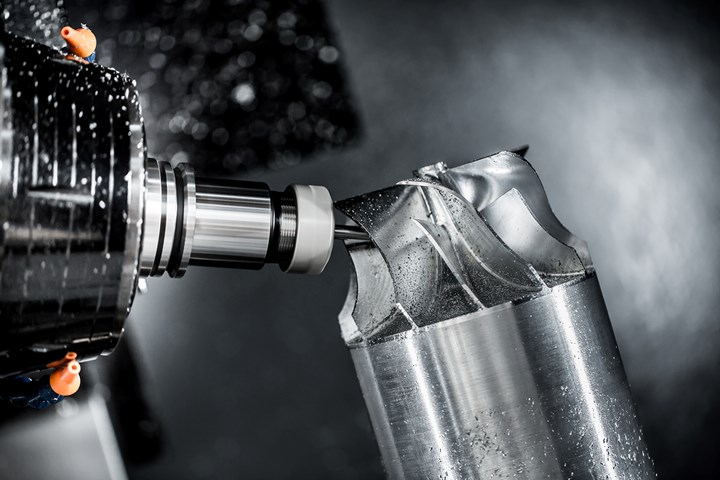Reducing Variation: The Only Way to Reduce Production Cost
Hidden variation in production is what increases costs in manufacturing. Here are four tips for reducing variability.
Hidden variation is what increases your costs. Permanently eliminating the causes of variation is the only way to truly reduce costs in manufacturing.
The goal of management is to achieve certain objectives. The way of smart managers is to intelligently manage risk. The means of intelligently managing risk is through reduction in variation in the processes in your control.
Variation increases your costs. Think about a worker loading and unloading a chucker. The greater the variation of the worker’s time, the fewer parts will be produced at the end of the shift. The closer the worker’s “cycle time” matches that of the machine, the greater the number of parts at the end of the shift.
Variation affects more than just direct costs. Variation in yield can affect order patterns and, thus, scheduling. Variation in scheduling affects leadtimes, causing order quantities and frequencies to vary.
Variability in quality, yield, scheduling and releases all cause more variability. Those, in turn, cause an increase in risk to all parties. Eliminating variability is the key to reducing risk and reducing the complexity of all the issues we have to manage in our businesses.
Here are four tips for reducing variability in your operations:
1) Standardize materials and sourcing. That was the first lesson I documented as a quality manager in the steel industry. Our vice president of purchasing was convinced that he could chase low prices to get profitability. However, those low prices brought us non-conforming material, huge in-process rejections and suspicion about the status of material that passed inspection (not to mention short or late deliveries—or heroics to expedite replacement material, which increased costs).
Failure to standardize sourcing exposes your processes to the full range of global variation. Lock in on a supplier and reduce your variation, risk and costs.
2) Standardize work to reduce in-process variation. I was once involved in an investigation for an automotive supplier who blamed the steel for “poor machinability.” It was a truckload, round-the-clock, running-on-multiple-machines business.
The fact that our steel ran above rate on five of the machines was conveniently ignored by the customer. He was fixated on the four machines that were running below plan.
An examination of the control charts, tool replacement records and drill grinds on the four underperforming machines (compared with the five machines that were achieving plan) showed major differences. The variations cost the customer a production shortfall on four machines times three shifts. It wasn’t the steel.
3) Standardize gaging. This is actually a subset of “Standardize work.” Let’s go back to that chucker job. If there are multiple ways to gage the part on the bench—say, an assortment of mikes and calipers—the decision over which gaging method to use could cost the operator a second or two for each part. That means fewer parts per shift, thus increasing the cost per part.
4) Do not be seduced by “low cost” or “magic solutions.” Remember: consistency is the goal. How does throwing more variation into your operations improve consistency?
Alternative materials, tools or methods should be proved by testing before being adopted in the shop. Failure to control the self-inflicted variability of “new,” “cheaper” or “magic” improvements has increased shops’ costs far more than the routine normal variability of an existing source.
Careful experiments can be an important way to discover better processes. But, reckless adoption of unproven inputs will assure increased variation, increased costs and missed deliveries.
“Variation” is a synonym for risk, increased cost, missed deliveries and loss of customer confidence. Variation can require you or your customer to increase order quantities and order frequencies, only to dramatically cause those orders to be canceled.
How do you intelligently manage risk? By intelligently reducing variation.
Related Content
Pursuit of Parts Collector Spearheads New Enterprise
While searching for a small parts accumulator for Swiss-type lathes, this machine shop CEO not only found what he was looking for but also discovered how to become a distributor for the unique product.
Read More3 Common Filtration Questions Answered
Learn about the variety of filters for removing particulates from a cleaning fluid, how to determine cleaning fluid life and more.
Read MoreImportant Machining Factors of Carbon Steels
Learn the factors that contribute to carbon steels and their machinability as well as the 1214 steels, 1215 steels and 1018 steels, other grades, and more.
Read MoreVideo: Why a Production Machine Shop Started a Baseball Bat Company
A 153-year-old manufacturer of precision, metal pins recently started a side business creating custom wooden baseball bats. The reasoning behind establishing this new company is intriguing, as is how it has helped create a stronger bond with the local community.
Read MoreRead Next
Do You Have Single Points of Failure?
Plans need to be in place before a catastrophic event occurs.
Read MoreA Tooling Workshop Worth a Visit
Marubeni Citizen-Cincom’s tooling and accessory workshop offers a chance to learn more about ancillary devices that can boost machining efficiency and capability.
Read More5 Aspects of PMTS I Appreciate
The three-day edition of the 2025 Precision Machining Technology Show kicks off at the start of April. I’ll be there, and here are some reasons why.
Read More






















